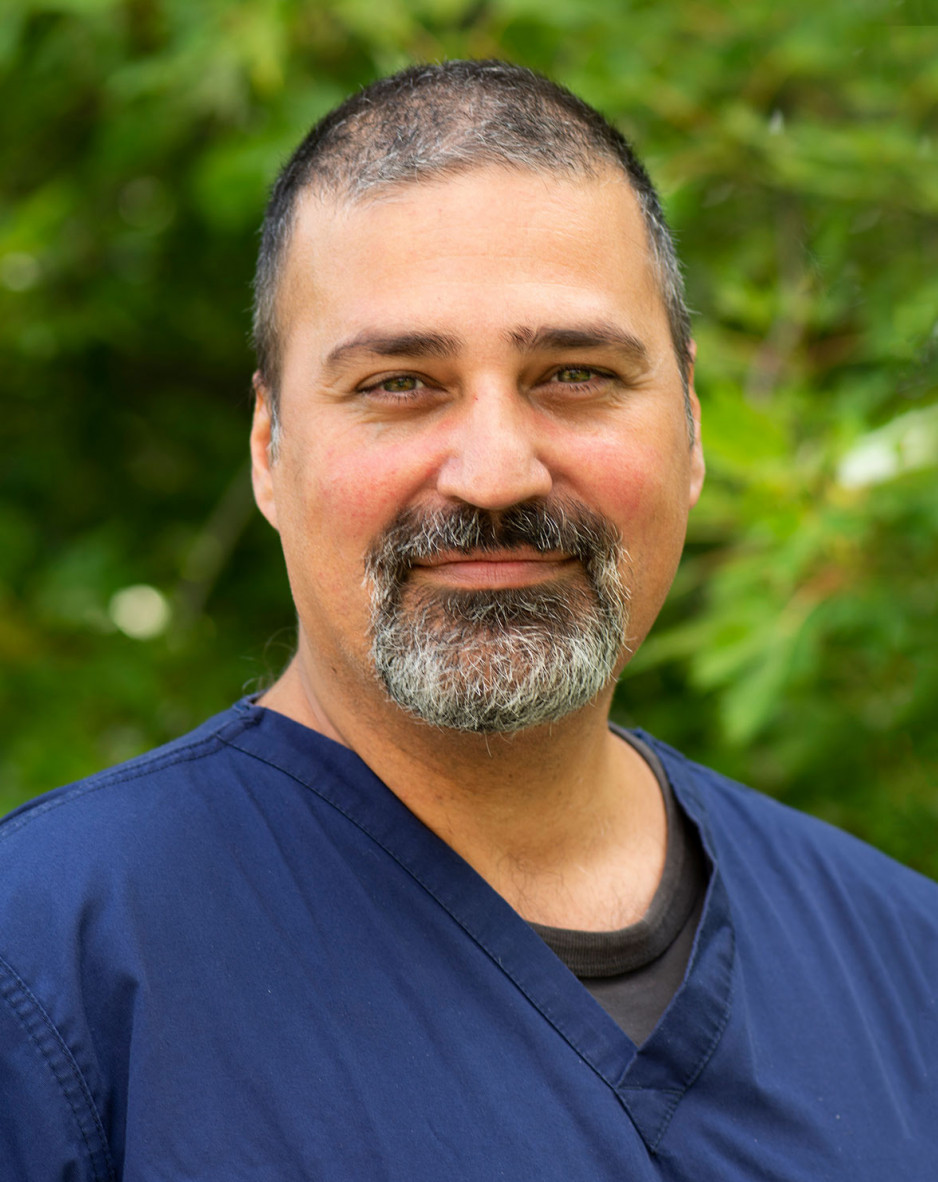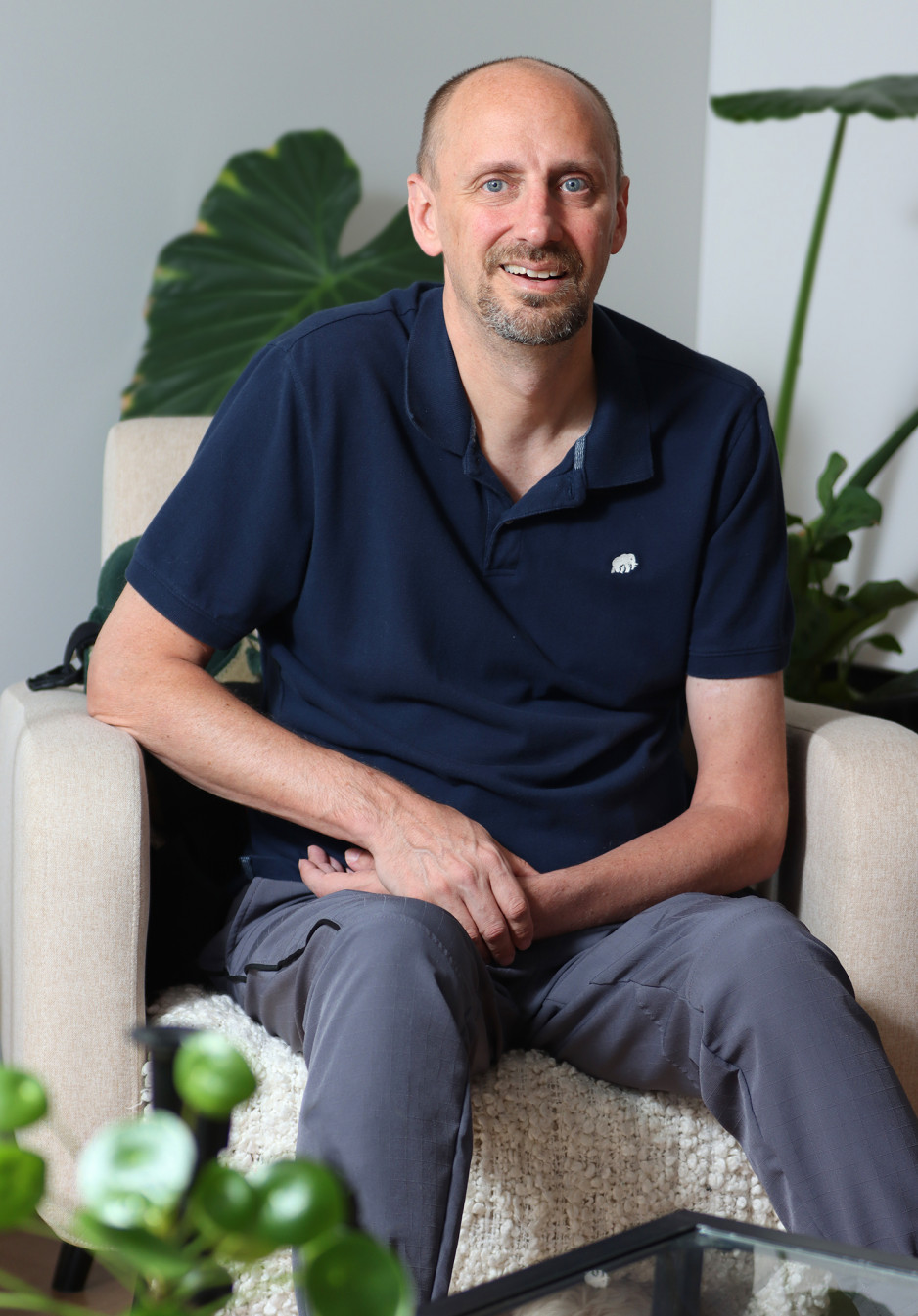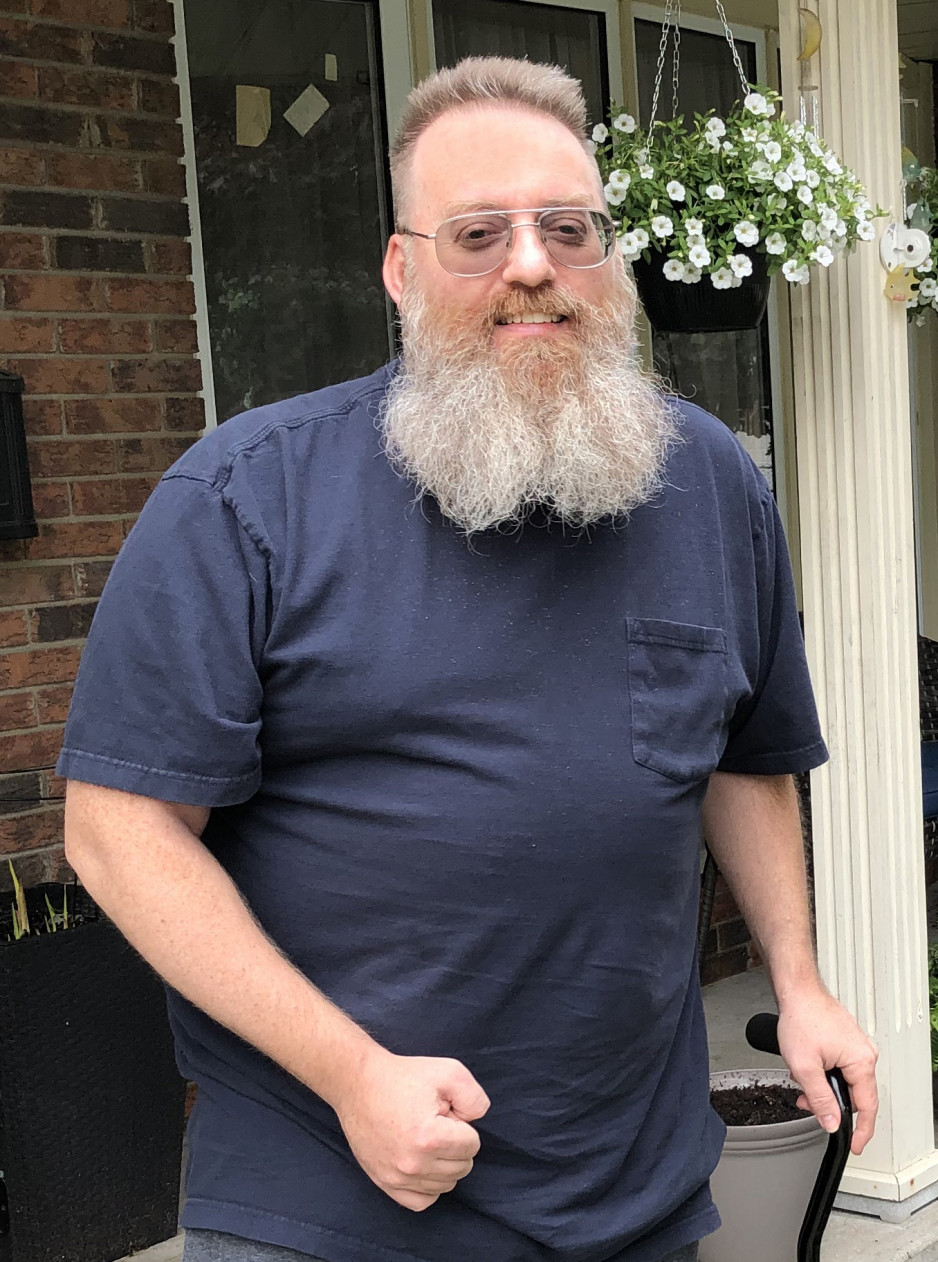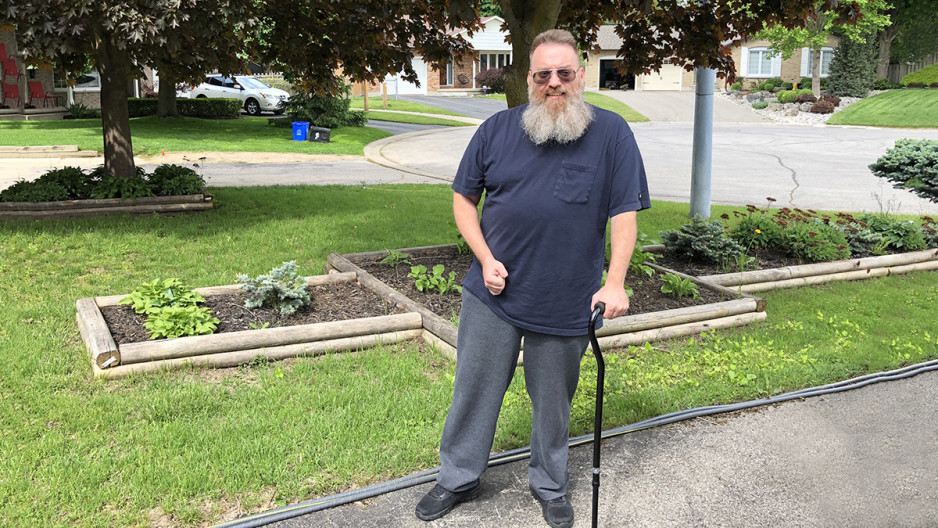FAST and slow - the varying speeds of a stroke journey
Would you recognize the signs of a stroke in yourself or someone else? 49-year-old Londoner Michael Lees is grateful his wife can. Her knowledge and quick action most likely saved his life. In the middle of the night in January 2022, Michael woke up with a strange feeling, “I kept tossing and turning, I couldn’t get comfortable,” he remembers. “My wife asked if I was OK and she noticed when I replied I was slurring my words. She quickly asked me to squeeze her hands with mine and when I couldn’t, she called 911.”
“The first four hours after a stroke are crucial to providing life saving care and reducing the severity of the damage..."
Paramedics rushed Michael to London Health Sciences Centre’s (LHSC) University Hospital where he was diagnosed with a stroke caused by a blood clot in the brain. After two surgeries, one to remove the clot and place a stint in his brain and a second to repair internal bleeding, Michael was on the long road to recovery.
“The first four hours after a stroke are crucial to providing life saving care and reducing the severity of the damage a stroke can cause to the brain,” says St. Joseph’s Health Care London (St. Joseph’s) physiatrist Dr. Ricardo Viana. Blood clots are the most common cause of strokes and special drugs called thrombolytic medicines can be used to break-up or dissolve clots in the body. However, they should be given to the person within four and a half hours after their first stroke symptoms.
“There is a very small window of time when these drugs can be given to patients,” adds Dr. Viana. “That’s why we encourage everyone to know the signs of the FAST acronym, don’t drive to the hospital, but rather call 911 right away.”
F = Face (is it drooping?)
A = Arms (can you raise both arms?)
S = Speech (is it slurred or jumbled?)
T = Time (to call 911)
Other signs to watch for include weakness and tingling, mostly on one side of the body, sudden vision changes, severe headache and/or dizziness.
Slow and steady on the road to recovery
After his stay at LHSC, Michael transferred to St. Joseph’s Stroke/Neurological Rehabilitation Program at Parkwood Institute for rehabilitation. When he first arrived, he could not use of the left side of his body due to his stroke.
"...The team was amazing at supporting me through this, especially the physiotherapists. They helped me build my confidence and keep going.”
With the help of the specialized inpatient rehabilitation team at Parkwood Institute, Michael relearned how to walk. “I had intensive physio two to three hours a day. The team was amazing at supporting me through this, especially the physiotherapists, who kept me motivated and focused. They helped me build my confidence and keep going.”
Recovery has been slower than Michael would like, but he knows it’s up to him to push forward, “I want to get back to who I used to be, before the stroke and it’s been slow, but I’ve learned that the harder I work in my therapy, the faster I meet my goals. If I had any advice for others who may be going through this, it’s to do what your health care team and therapists ask you to do. That’s the best way to recover.”
One step is enough
Roger Oatman has learned a lot of lessons in the past two years following his stroke. It was April 22, 2020 at 10:30 am when Roger awoke, not feeling well. He had worked nights the evening before and was waiting for a call from his wife.
His last clear memory for weeks is picking up his cell phone and then falling to the floor. He wrote about his experience, describing it in his own words.
“I remember my son, arguing with my wife, as she was on the speaker phone. Something was wrong. The ambulance drivers we're wheeling me out the door. Then I can't remember anything that happened to me the next three weeks. I was in St.Thomas Elgin General Hospital. Because my stroke was left brain bleed, I was affected on the right side. The right arm and the right leg. And Broca's Aphasia I have difficulty getting my words out. My leg started to recover. But I only had an hour everyday for physio. (I) worked hard, I hope to get better so I could return to work. Regrettably it was not be. Unfortunately, we were first in COVID pandemic. Almost three months in the hospital. So I didn't have any visits with my family. July 14, 2020 was my return to our home. My family set everything up for me, so l could live on the main floor…”
Roger was then connected with Parkwood Institute’s Community Stroke Rehabilitation Team (CSRT) a specialized program that provides rehabilitation for stroke survivors in their home or community setting. The team includes physiotherapists, occupational therapists, social workers, registered nurses, speech language pathologist, therapeutic recreational specialists, and rehabilitation assistants who together with community programs ensure patients have access to the support they need. CSRT along with the March of Dimes and VON became partners in Roger’s care and have helped him get back to living his life.
"... Don’t give up. It will get better, every day."
“When I first came home (from the hospital), I could barely walk at all maybe 10 or 15 steps, but now with the help of my health care team, I’m walking all over the house without a cane,” Roger says.
In reflecting on his experience, he wishes that he had known that, “…every stroke is different” and that comparing yourself to others when recovering isn’t helpful. “Just get up, every day. Remember even one or two steps is an accomplishment. Take one or two steps multiple times a day and don’t give up. It will get better, every day.”



